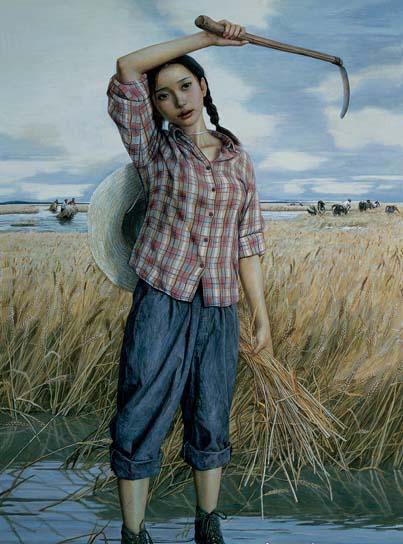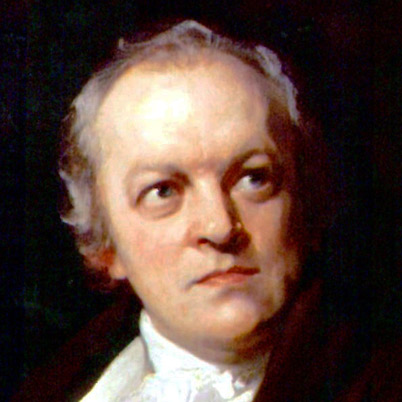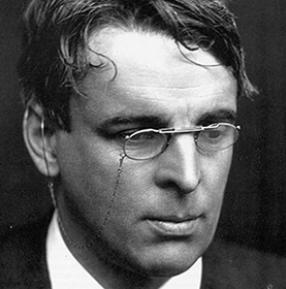Critical Analysis of The Tyger:
It is hard to understand whether “The Tiger” is about the tiger itself or about God. The answer is not in the content of the poem but in the title of the collection from which it is derived. The tiger exemplifies experience as opposed to innocence. According to Blake, man’s entire experience on the earth could be divided into innocence, experience, and finally, a higher innocence or what Blake called ‘Beulah.’ “The Lamb” and “The Tiger” are companion poems, and they represent opposites. The lamb represents innocence. Its world is an idyllic and peaceful one. It is the world where God looks kindly upon all his creatures. To this world, Christ is sent because man has prayed for salvation. The priests have led their flock well and so Christ the lamb has come to save them all from damnation. In contrast to this, the tiger represents experience. Its world is a harsh one, where survival is not easy. Man is unable to understand why the God who loves him also created a creature as fearful as the tiger. However, God knows that the world must have balance and symmetry. If there is no darkness, then man will never see the light. If there is no sorrow, then man will never be able to appreciate joy. That is why God creates Man’s world with both joy and fear and makes sure that man learns to deal with both. Once a man has understood how to do so, he can find a way to survive in this harsh world with a smile on his face, and his many fears will be set aside for the time being.
Stanza-wise Annotation of The Tyger:
Please note: N= noun, V=verb, Adj=Adjective, Adv=Adverb, P=Preposition, Pr=Pronoun
1st stanza:
Immortal (Adj): Living forever; never dying or decaying
Frame (V): Make or construct (something) by fitting parts together or in accordance with a plan
Thy (Pr): An older form of the word “your”
Fearful (Adj): Causing or likely to cause people to be afraid; horrifying
Symmetry (N): Correct or pleasing proportion of the parts of a thing
2nd stanza:
Deeps (N): Plural form of the word “deep,” that is, the sea
Thine (Pr): An older form of the word “your”
Dare (V): Have the courage to do something
Aspire (V): Direct one’s hopes or ambitions towards achieving something
Seize (V): Take hold of suddenly and forcibly
3rd stanza:
Art (N): A skill at doing a specified thing, typically one acquired through practice
Twist (V): Form into a bent, curling, or distorted shape
Sinews (N): Plural form of the word “sinew,” that is, a piece of tough fibrous tissue uniting muscle to bone; a tendon or ligament
Dread (Adj): Regarded with awe; greatly revered
4th stanza:
Furnace (N): An enclosed structure in which material can be heated to very high temperatures, e.g., for smelting metals
Anvil (N): A heavy iron block with a flat top and concave sides on which metal can be hammered and shaped
Grasp (N): A firm hold or grip
Deadly (Adj): Causing or able to cause death
Terrors (N): Plural form of the word “terror,” that is, extreme fear
Clasp (V): Grasp (something) tightly with one’s hand
5th stanza:
Spears (N): Plural form of the word “spear,” that is, a weapon with a pointed tip, typically of steel, and a long shaft, used for thrusting or throwing
Water’d (V): Short form of the word “watered,” which is, in turn, the past tense of the word “water,” that is, to (of a person’s eyes) fill with tears.
Poetic Devices in The Tyger:
Rhyme scheme:
Each of the six stanzas in “The Tiger” consists of a pair of rhyming couplets. That is, each of these stanzas follows the same simple rhyme scheme – AABB. However, some of the end rhymes may not seem obvious to us since the way in which they were pronounced in Blake’s time has changed since then. For example, in the 1st stanza, the word “symmetry” as we pronounce it (symme – tree) does not rhyme with the word “eye,” but the way in which it was pronounced in Blake’s time (symme – try) did.
Rhetorical devices:
1st stanza:
Apostrophe:
This rhetorical device is used when a poet addresses his or her poem to an absent audience. In this stanza and all the remaining stanzas of the poem as well, the poet uses the device of an apostrophe when he addresses his words directly to the tiger, whom we readers never see at any point in the poem.
Alliteration:
This rhetorical device is identified by the repeated sound of the first consonant in a series of multiple words or the repetition of the same sounds or of the same kinds of sounds at the beginning of words or in the stressed syllables of a phrase. In this stanza, the poet uses the device of alliteration when he repeats the “f” sound thrice in line 4 – “…Could frame thy fearful symmetry?”
2nd stanza:
Metaphor:
This rhetorical device is used when a covert comparison is made between two different things or ideas. In this stanza, the poet uses the device of metaphor in line 2 when he compares the glinting of the tiger’s eyes with the burning of fire.
5th stanza:
Personification:
This rhetorical device is used to bestow human qualities on something that is not human. In this stanza, the poet uses the device of personification with respect to the stars in lines 1 and 2 when he imagines them to be warriors who surrender their weapons and when he gives them the ability to weep.
Central Idea of The Tyger:
The tiger is a fearful creature, and the poet wonders how strong God had to be in order to give birth to such a creature and, in fact, to choose to do so.
Themes of The Tyger:
Lamb and tiger; innocence and experience: The setting of “The Lamb” is in a serene and pastoral world. In contrast, this poem is set in a world full of dark forests. The lamb is meek and mild, while the tiger is fierce and fearful. Hence, these represent the contrasting states of innocence and experience, both of which are stages that every man must pass through in his life.
The God of the New Testament: In asking whether the same God created both the lamb and the tiger, Blake is talking about the God of the New Testament. The God of the Old Testament is a cruel God. But the God of the New Testament is both harsh and kind. He disciplines us but also loves us. That is why he is able to create both a mild creature like the lamb as well as a scary one like the tiger.
The tone of The Tyger:
The predominant tone of this poem is one of awe. The poet is amazed at the huge structure and the fiery eyes of the tiger, as well as at the strength and courage of its maker.
Conclusion:
“The Tiger” is the best-known poem of The Songs of Experince. It is in contrast with its companion poem, “The Lamb.” Moreover, these two poems in unison bring out the God of the New Testament in all his facets and, therefore, are a very effective vehicle for Blake to present his religious and mythical views.
Updated by Anjali Roongta on 22nd April 2023
Some online learning platforms provide certifications, while others are designed to simply grow your skills in your personal and professional life. Including Masterclass and Coursera, here are our recommendations for the best online learning platforms you can sign up for today.
The 7 Best Online Learning Platforms of 2022
- Best Overall: Coursera
- Best for Niche Topics: Udemy
- Best for Creative Fields: Skillshare
- Best for Celebrity Lessons: MasterClass
- Best for STEM: EdX
- Best for Career Building: Udacity
- Best for Data Learning: Pluralsight













